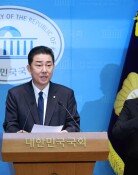Financial Indicators plummeting
A series of financial indicators closely related to the economic situation are falling. Corporations financial needs for investment have decreased and credit card expenditures, a barometer of consumption, have dropped. Long-term interest rates indicating the economic forecast have been falling, and the proportion of short-term market funds has been significantly higher.
Kang Jeong-won, the chief executive officer of Kookmin Bank, diagnosed at a monthly meeting on June 1 that corporations and households used to be very optimistic about economic recovery at the beginning of this year, but the economy seems to be worsening over time. Chief Executive Officer Kang Gwon-seok of the Industrial Bank of Korea expressed his concern, saying, Overseas indicators such as the foreign exchange rate and oil prices have been staggering, and it is difficult to expect that the economy will be better anytime soon.
Loans for Investment Declining-
Facility loans that corporations extended from the Korea Development Bank in May stood at 600 billion won, down five percent compared to the same period the previous year (632 billion won). Facility loans, compared to the same period last year, increased 433.7 percent in March and 134.9 percent in April, following a 63.9 percent rise in January (677 billion won). The figure for February with the New Year holidays factored in fell 41.5 percent due to a seasonal effect.
It was analyzed that a genuine investment recovery was underway with a surge of loans for investment at the beginning of this year. However, a pessimistic view is now developing that the increase was ascribed to the funds applied for last year being executed this year and thus cannot be interpreted as a real increase in investment. According to the Korea Development Bank, the growth rate of this years investment planned by domestic corporations is merely 14.4 percent against the previous year, which is a half of the amount invested in 2004 (29.7 percent).
Credit Card Expenditures Also Falling-
According to the six specialized credit card companies, Samsung, Hyundai, Lotte, Shinhan LG and BC, and the Foreign Exchange Credit Services, credit card receivables (excluding cash advance services) for April were 11,950.2 billion won, up 12.8 percent against the same period the previous year (10,593.3 billion won). However, the same figure was down 7.3 percent compared to March (12,812.4 billion won).
This indicates that consumption, a key to economic recovery, has not revived.
Lee Bo-woo, a senior researcher of the Credit Finance Association, said, The economy has been at a standstill due to contracting consumption. And the whole years sum of credit card receivables will not be far bigger than that of the previous year.
The Portion of Short-Term Funds Exceeded 50 Percent-
When the economy shows a sign of contraction, funds tend to be managed on a short-term basis. According to the Bank of Korea, funds with a maturity below six months amount to 812 trillion won (in terms of average balance), which constitutes 50.5 percent of the total funds. It was the first time that the portion of short-term funds exceeded 50 percent since 1997 when the Bank of Korea first followed up the characteristics of market funds.
Money market funds, one of the most prevalent short-term funds, increased to 69,400 billion won, up 14.3 percent from 60,700 billion won in January. Shin Yong-sang, a senior researcher of Korea Institute of Finance, explained, As the incentives for long-term investment become weak under a worsening economy, market funds tend to be managed on a short-term basis.
Long-term Interest Rates Falling-
The long-term interest rate, which surged once, is showing a decreasing trend. The falling long-term interest rate means that a consensus of not-so-promising future economic prospects prevails. The government bond yield with a three-year maturity on May 31 was 3.67 percent, down 0.03 percent point from the previous day. As a result, the gap between the call rate and the long-term interest rate was narrowed down to 0.41 percentage points. The long-term interest rate has been falling since March, after having increased 3.65 percent in January and 4.19 percent in February. The increase in long-term interest rates at the beginning of this year was due to the fact that market expectations of economic recovery were dominant and that the government suggested the possibility of raising the interest rate.
Ki-Jeong Ko Sun-WooKim koh@donga.com sublime@donga.com



![‘건강 지킴이’ 당근, 효능 높이는 섭취법[정세연의 음식처방]](https://dimg.donga.com/c/138/175/90/1/wps/NEWS/IMAGE/2026/01/18/133181291.1.jpg)



